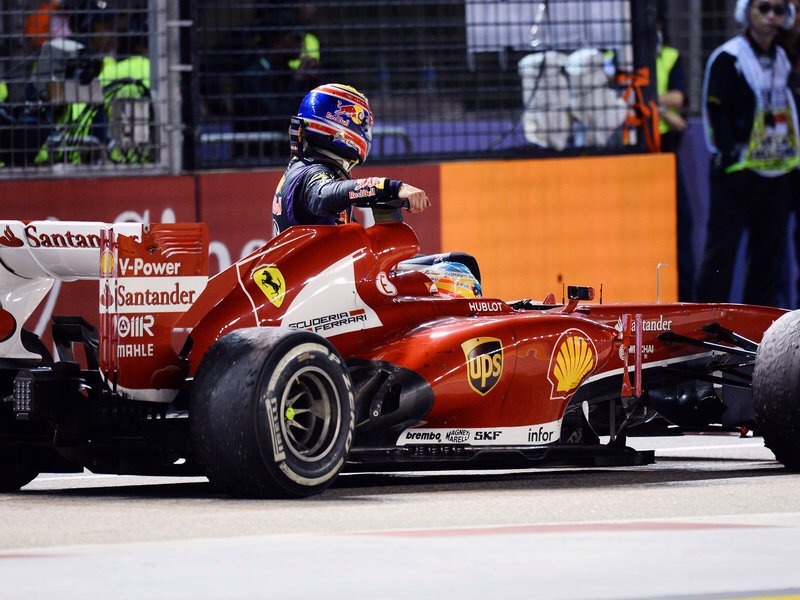FIA vs Mark Webber - who is right?
 Mark Webber has been reprimanded for the
third time this season resulting in his 10 place grid penalty in Korea for
hitching a ride back to the pitlane along with Fernando Alonso at the Singapore
Grand Prix. Though the FIA hasn’t ‘banned’ this procedure as such, it was
thoroughly discouraged as it lead to life threatening incidents in its previous
occurrences.
Mark Webber has been reprimanded for the
third time this season resulting in his 10 place grid penalty in Korea for
hitching a ride back to the pitlane along with Fernando Alonso at the Singapore
Grand Prix. Though the FIA hasn’t ‘banned’ this procedure as such, it was
thoroughly discouraged as it lead to life threatening incidents in its previous
occurrences.
Ever since Ayrton Senna rode on the side
pod of Nigel Mansell’s Williams at Silverstone in 1991, the FIA has made it
clear to the drivers that their safety is priority and cannot be compromised at
any point in time. History repeated itself when Fernando gave Webber a lift
last Sunday. (Probably, also to repay Webber for the same act he did in 2011). Derek Warwick, a
steward at the Grand Prix and also an ex-F1 driver agreed: "It is not
health and safety gone mad. (But) a driver could easily have been hurt.”
Under further investigation and publically available CCTV
footage of the incident showed that Mark Webber ran across the track after his
engine caught fire due to overheating. His reprimand was for running back onto
the track without Marshals’ permission, while Alonso’s was for an unsafe pull
over in the middle of the track. While there are many takes on this matter,
whether Webber deserved that penalty or not, it’s obvious that both drivers
were a danger to themselves and also the cars behind them.
This has been a rule for ages that Webber and Alonso have
misunderstood, and for all we know might’ve disobeyed in name of ‘friendship’
in motosport. What we saw in Singapore was very much appreciated- a good
professional relationship between two drivers, but next time, probably we
should expect such acts backed by a bit of more common sense.
"We could not do otherwise." Swiss steward Paul
Gutjahr insisted, regarding the harsh penalty given to Webber after the race.
Did Webber deserve that harsh penalty?
Very simply,
yes, the FIA was justified in doing so. Webber acted in an unsafe manner, which
wasn’t appreciated by the FIA nor was it applauded the other drivers behind
when Alonso stopped on the racing line. Watching the CCTV coverage, the entire
incident looked dodgy, which gained them both reprimands. The reprimand wasn’t
given for the ‘taxi ride’ as such, but the way in which both drivers jeopardized
safety.
The FIA also asserted their rules by imposing a harsh penalty
on Webber for disregarding the written regulations of the sport. For if a
driver doesn’t learn this the harsh way, there is no stopping such precarious
acts from being repeated over and over again, hence making it very clear to the
drivers about playing by the rules, the FIA has strengthened its control over
the sport and its drivers.
To give you an example: Speeding in the pitlane
calls for a fine to be paid by the driver because it can be very dangerous if
drivers speed in the narrow lane. Had this not been done, the drivers would
continue to speed in order to reach the track earlier; making the pitlane would
be an unsafe zone. In the very same light, Webber’s penalty is a sort of
reminder to rest of the 21 grand prix drivers.
In the end, rules are meant to mark the boundaries up to
which a team or driver (in this case) can go. If any team personnel is found
disregarding these lines set by the governing body will have to be penalized,
which has been the right thing to do in Webber’s case.
Comments
Post a Comment